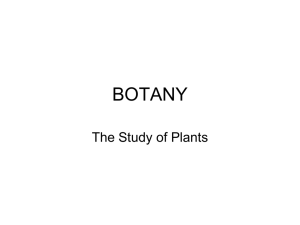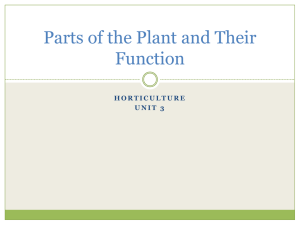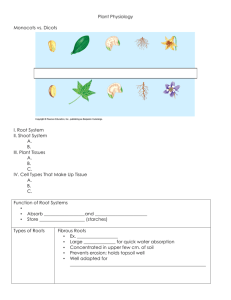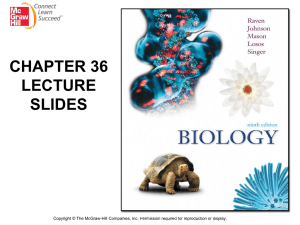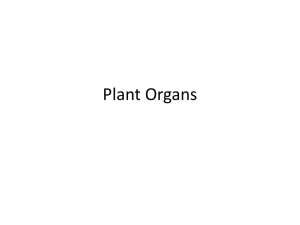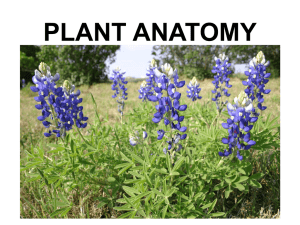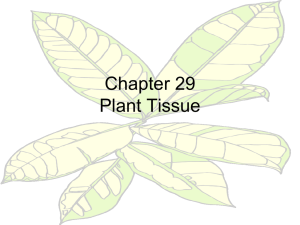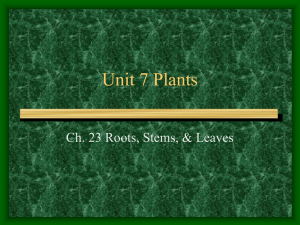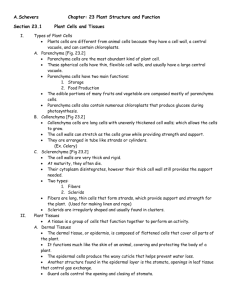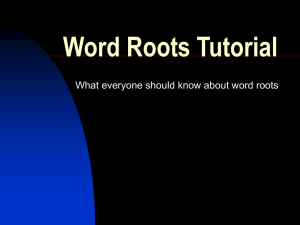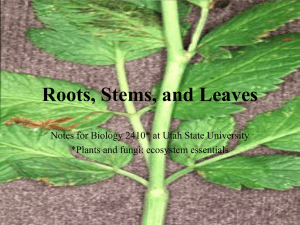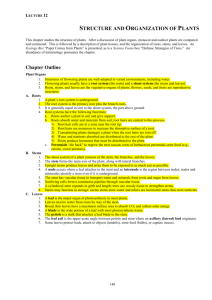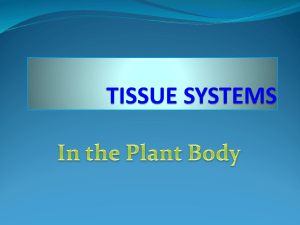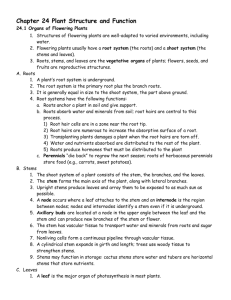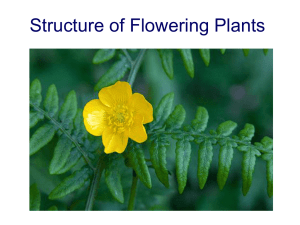Roots and Stems
advertisement
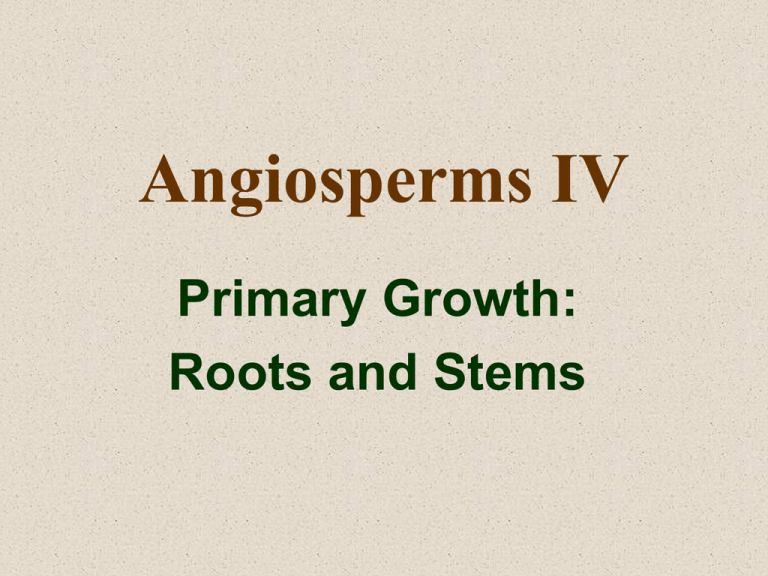
Angiosperms IV Primary Growth: Roots and Stems Roots and Root Systems • Root Systems are often classified as either: – TAP ROOT SYSTEMS (found most commonly in eudicots) • have prominent tap root and smaller branch roots Root Systems – FIBROUS ROOT SYSTEMS (common in monocots) • many similar sized roots in an extensive network Functions of Root Systems • • • • • Anchorage Storage Absorption Conduction Reproduction (occasionally) Typical Eudicot Root Young Root (cont.) • Above the region of the meristem are the regions of elongation and region of maturation Meristem Root Hairs Single epidermal cells with a long extension Structure of an Older Dicot Root (cont.) Functions of Root Structures • ENDODERMIS – innermost layer of the cortex – functions in water regulation – cells are “belted” with a suberized layer called the Casparian strip – waterproofs the layer so water must move through the cells (not the walls) into the stele Endodermis Functions of Root Structures (cont.) • PERICYCLE – source of cells for formation of branch (lateral) roots – involved in formation of cambial layers in woody roots – endogenous growth of branches Functions of Root Structures (Cont.) • PHLOEM – transport of nutrients • XYLEM – protoxylem (first to mature in the root) – metaxylem (last to mature) – water and mineral conduction • CAMBIUM (with pericycle cells will form vascular cambium in woody root) Root Modifications • Storage tap roots (radish, jicama, carrots) Root Modifications (cont.) • Fascicled storage roots (yams, sweet potatoes, cassava) Sweet Potatoes Casava for sale Sweet Potato vs.Yam • Impomea batatas (sweet potato) • Diascorea batata (yams) Root Modifications (cont.) • Prop roots (corn) Root Modifications (cont.) • Aerial roots (Spanish moss, orchids) Aerial roots on an orchid Root Modifications (cont.) • Pneumatophores for gas exchange on white mangrove plants Eudicot Stem Structure (cont.) • Leaf primordia with trichomes • Axillary (lateral) buds – give rise to branches – exogenous development Structure of a Eudicot Stem • Apical Meristem (shoot apex, shoot tip) – composed of tunica and corpus layers – tunica gives rise to protoderm – corpus gives rise to procambium and ground meristem Older Eudicot Stem (xs) • Epidermis • Collenchyma or fibers • Cortex • Vascular bundles • Pith Eudicot Stem Vascular Bundle • Bundle cap (composed of fibers) • Phloem • Fascicular cambium • Xylem Monocot Stem • Scattered vascular bundles (atactostele) • Surrounded by parenchyma cells (ground tissue) Monocot Vascular Bundle • Sheath of fiber cells • Phloem with obvious companion cells • Large metaxylem vessels • Air space Stem Modifications • Tendril (may also be a leaf modification) • Rhizome • Stolon or runner • Cladophyll • Thorn • Prickle • Spine (leaf modification) • Tuber • Corm vs. bulb (leaf modification) Tendrils • Leaf or stem modifications for attachment Rhizomes • Underground, horizontal stems Stolon or Runner • Above ground horizontal stems – Seen in strawberry plants Thorns • Thorns are modified branch systems Locust tree Crategus Spines • Spines are modified leaves Prickles • Epidermal structures found in roses and other plants Tuber • Underground, storage stem (a white potato)


